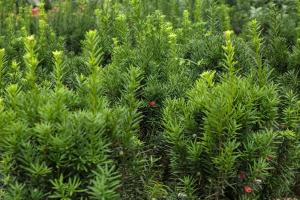What is Soil Water at Plant Available Level?
Soil water at plant available level refers to the water that is present in the soil and is readily available for plants to uptake. This water is important for plant growth and productivity as it provides the necessary moisture and nutrients that plants need to survive.
Factors Affecting Soil Water at Plant Available Level
Several factors affect the soil water at plant available level, including soil type, texture, structure, and drainage. Sandy soils, for example, have larger pores that allow for faster drainage, which can lead to drier conditions and less available water for plants. Clay soils, on the other hand, have smaller pores that hold onto water for longer periods of time, which can lead to waterlogging and decreased plant growth. Soil structure, which refers to the arrangement of soil particles and pore spaces, also plays a role in plant available water. Compacted soils, for example, have fewer and smaller pores, which can limit water movement and reduce plant available water.
Measuring Soil Water at Plant Available Level
There are several methods for measuring the amount of soil water at plant available level. One common method is the use of soil moisture probes, which can be inserted deep into the soil to measure moisture levels. These probes can be connected to data loggers and used to monitor moisture levels over time. Another method involves taking soil samples and weighing them before and after drying in an oven. The difference in weight can be used to calculate the amount of water present in the soil.
Importance of Soil Water at Plant Available Level
Soil water at plant available level is crucial for plant growth and productivity. Without adequate water, plants can become stressed and their growth can be stunted. This can lead to decreased yields and poor crop quality. In addition, soil water is important for nutrient uptake and transport, as water moves nutrients from the soil to the roots of the plant. Adequate soil water also helps to maintain soil structure and prevent soil erosion.
Managing Soil Water at Plant Available Level
There are several strategies for managing soil water at plant available level, including irrigation, mulching, and soil amendment. Irrigation is the process of applying water to the soil to supplement natural rainfall. This can be done through a variety of methods, including drip irrigation, sprinkler irrigation, and flood irrigation. Mulching involves placing a layer of organic material over the soil surface to maintain soil moisture and prevent evaporation. Soil amendment, such as adding organic matter, can improve soil structure and water holding capacity.
Conclusion
Soil water at plant available level is an important factor in plant growth and productivity. It is influenced by several factors, including soil type, texture, structure, and drainage, and can be measured using various methods. Managing soil water at plant available level is essential for maintaining healthy and productive plants, and can be achieved through irrigation, mulching, and soil amendment.

 how many times do yo...
how many times do yo... how many planted tre...
how many planted tre... how many pine trees ...
how many pine trees ... how many pecan trees...
how many pecan trees... how many plants comp...
how many plants comp... how many plants can ...
how many plants can ... how many plants and ...
how many plants and ... how many pepper plan...
how many pepper plan...































